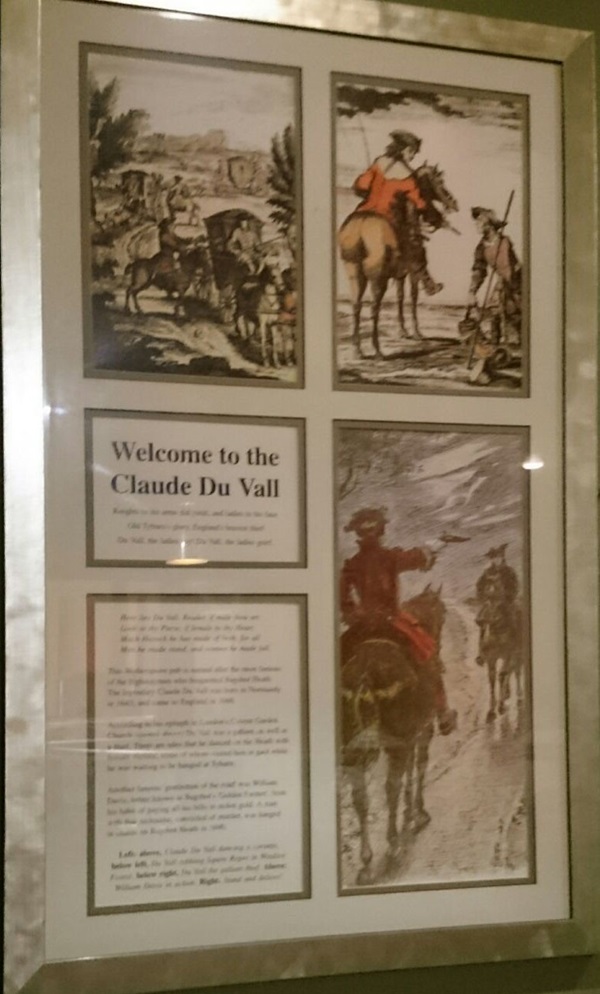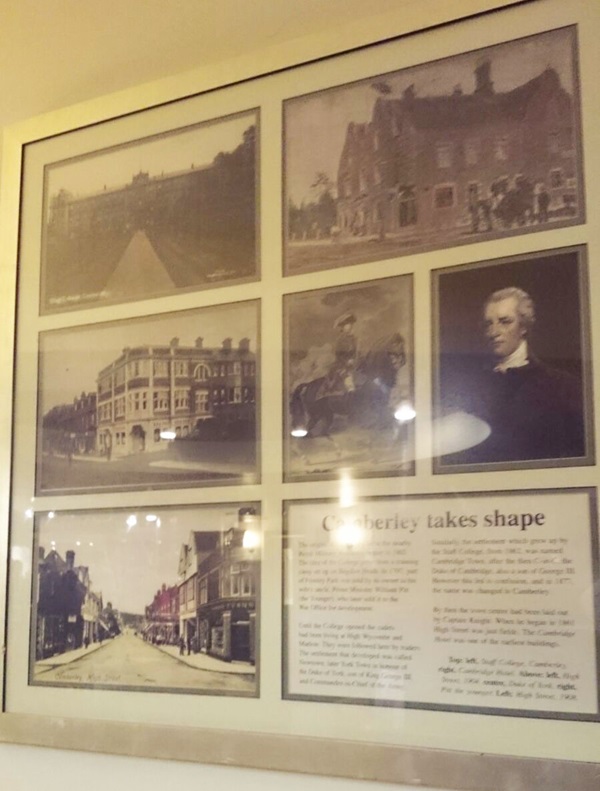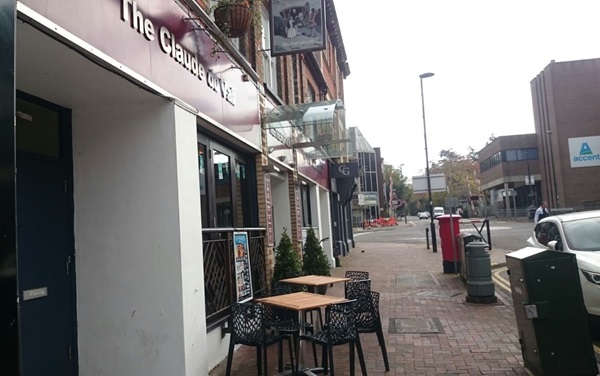77–81 High Street, Camberley, Surrey, GU15 3RB
Camberley was built on Bagshot Heath, once a notorious 17th- and 18th-century haunt of highwaymen. Among them was Claude du Vall, famed for his gallantry and daring. One of the most famous highwaymen in Camberley was William Davis, widely known as the ‘Golden Farmer’. He was commemorated by the Golden Farmer pub, a well-known local landmark. Other highwaymen included Thomas Simpson (alias ‘Old Mobb’) and Parson Darby, the highwayman curate of Yateley.
Prints and text about The Claud Du Vall.

The text reads: This Wetherspoon pub is named after the most famous of the highwaymen who frequented Bagshot Heath. The legendary Claud Du Vall was born in Normandy in 1643, and came to England in 1660.
According to his epitaph in London’s Covent Garden Church, Du Vall was a gallant, as well as a thief. There are tales that he danced on the heath with female victims, some of whom visited him in gaol while he was waiting to be hanged at Tyburn.
Another famous ‘gentleman of the road’ was William Davis, better known as Bagshot’s Golden farner, from his habit of paying all his bills in stolen gold. A man with that nickname, convicted of murder, was hanged in chains on Bagshot Heath in 1690.
Left: above, Claud Du Vall dancing, below left, Du Vall robbing Squire Roper in Windsor Forest, below right, Du Vall the gallant thief
Above: William Davis in action.
Prints and text about the history of Camberley.

The text reads: The origins of Camberley lie in the nearby Royal Military Academy, begun in 1802. The idea of the college grew from a training camp set up on Bagshot Heath. In 1797, part of Frimley Park was sold by its owner to his wife’s uncle, Prime Minister William Pitt (the younger), who later sold it to the War office for development.
Until the college opening the cadets had been living at High Wycombe and Marlow. They were followed here by traders. The settlement that developed was called Newtown, later York Town in honour of the Duke of York, son of King George III, and Commander-in-Chief of the army.
Similarly, the settlement which grew up by the Staff College, from 1862, was named Cambridge Town, after the then Duke of Cambridge, also a son of George III. However, this lead to confusion, and in 1877, the name was changed to Camberley.
By then, the town centre had been laid out by Captain Knight. When he began in 1261, High Street was just fields. The Cambridge Hotel was one of the earliest buildings.
Top left, Staff College, Camberley, right, Cambridge Hotel
Above: left, High Street, 1904, centre, Duke of York, right, Pitt the younger
Left: High Street, 1908.
External photograph of the building – main entrance.

If you have information on the history of this pub, then we’d like you to share it with us. Please e-mail all information to: pubhistories@jdwetherspoon.co.uk